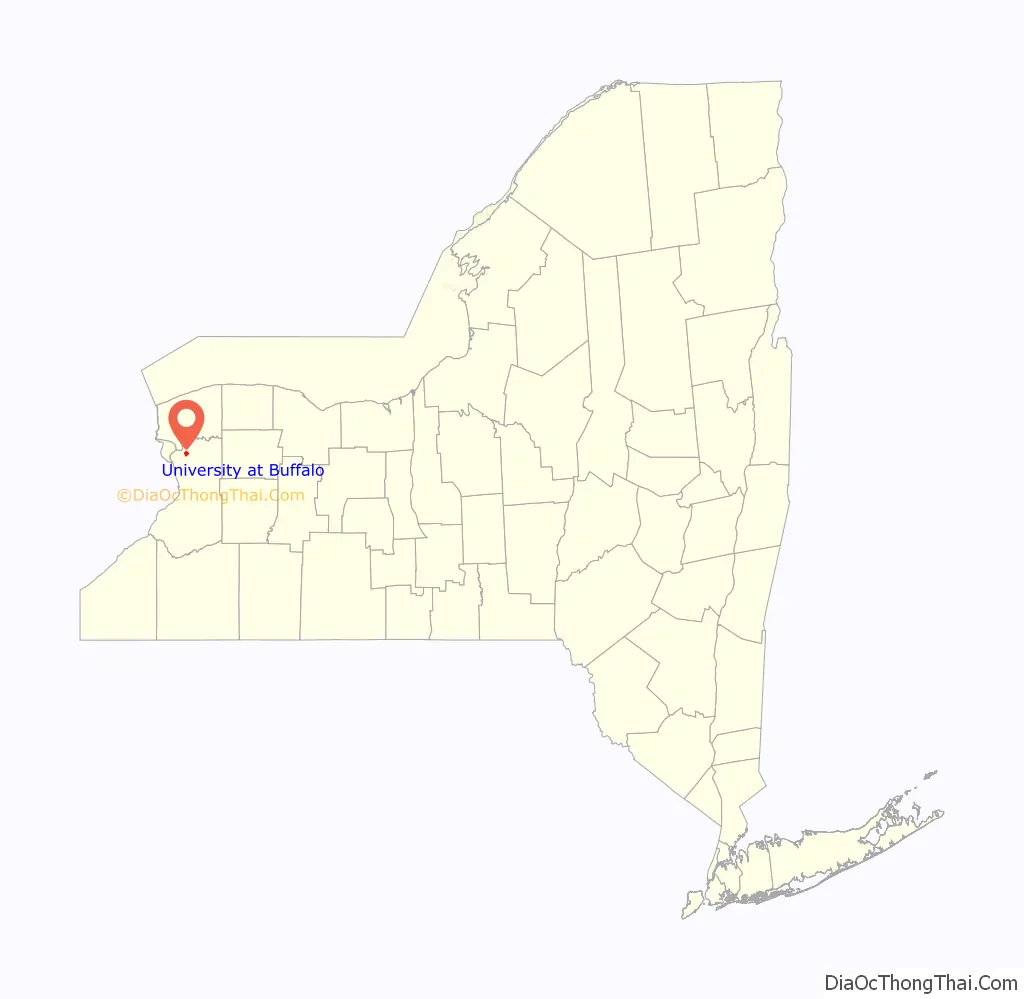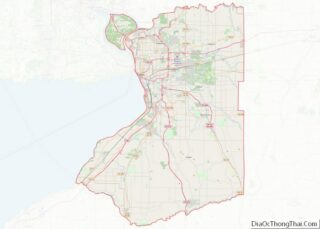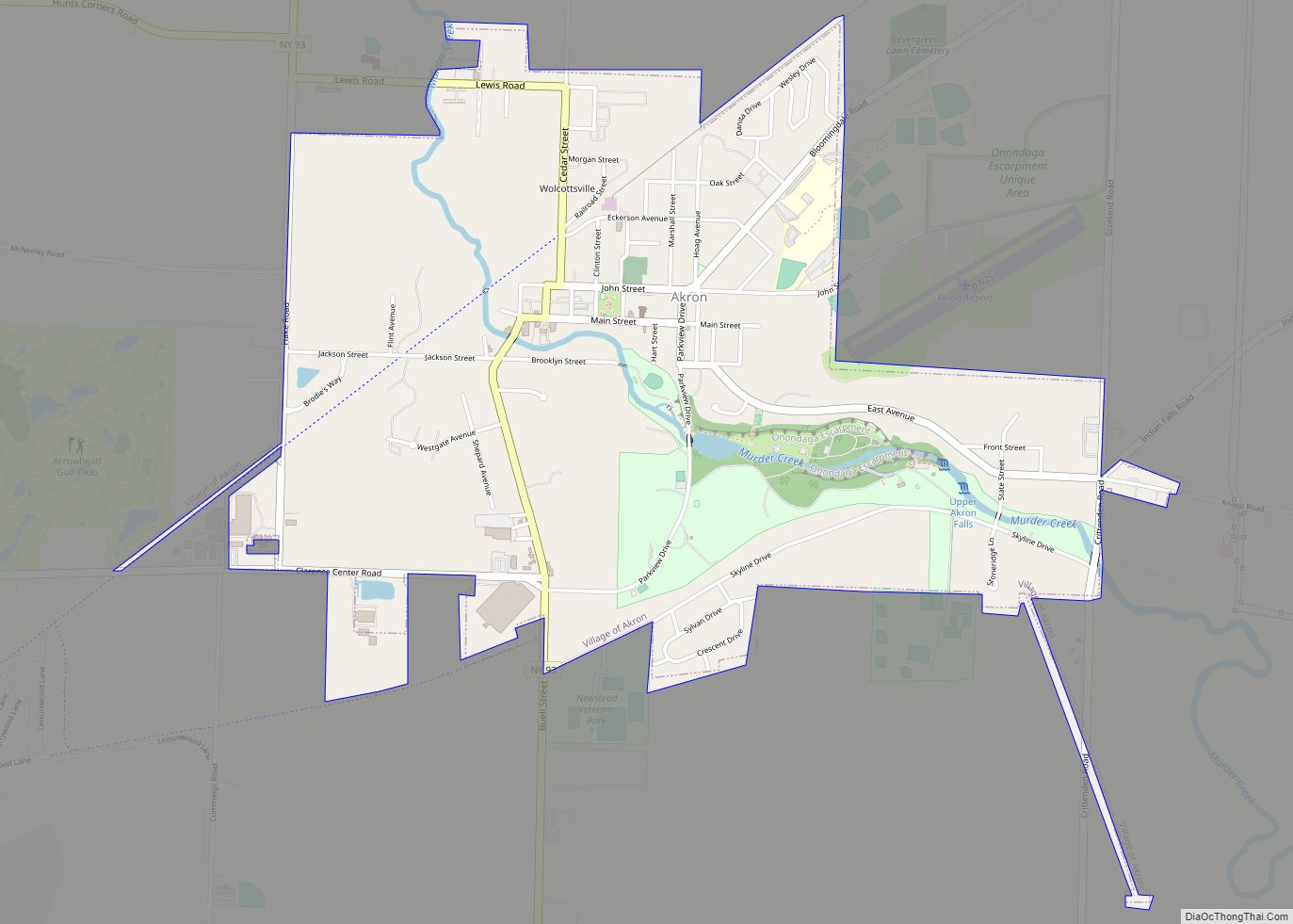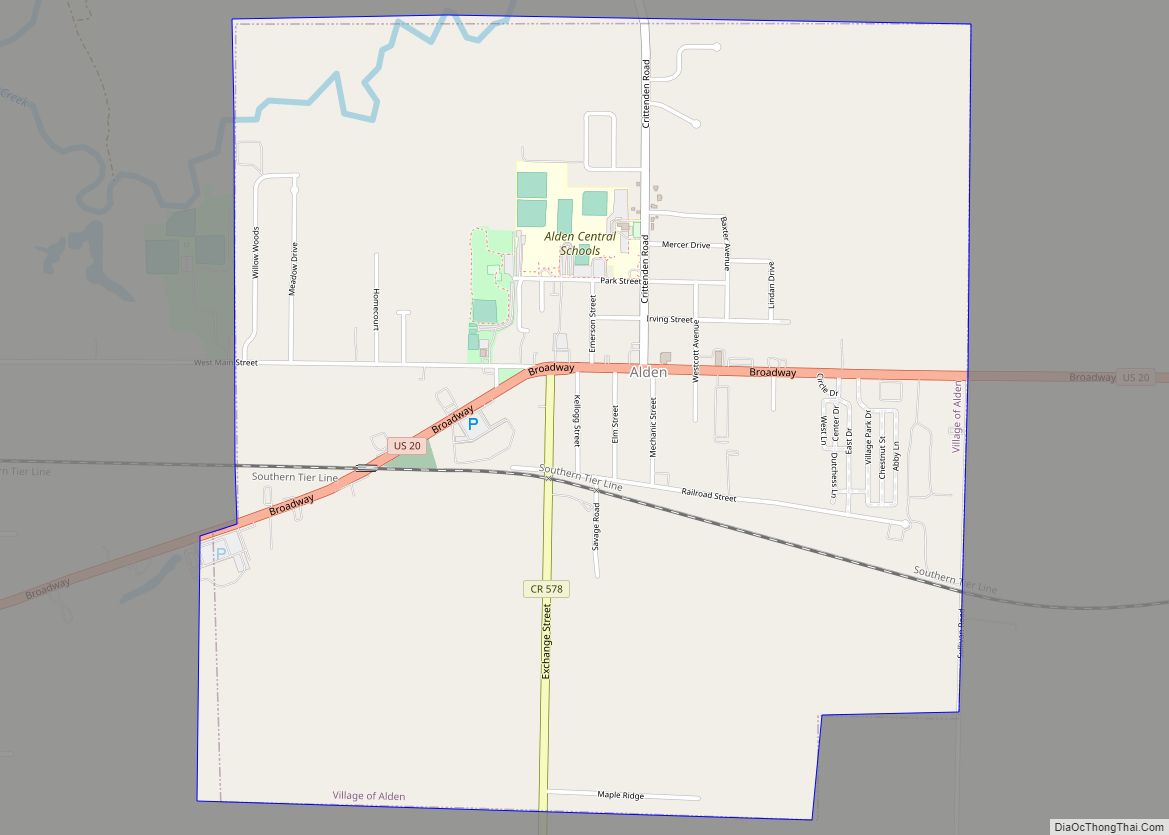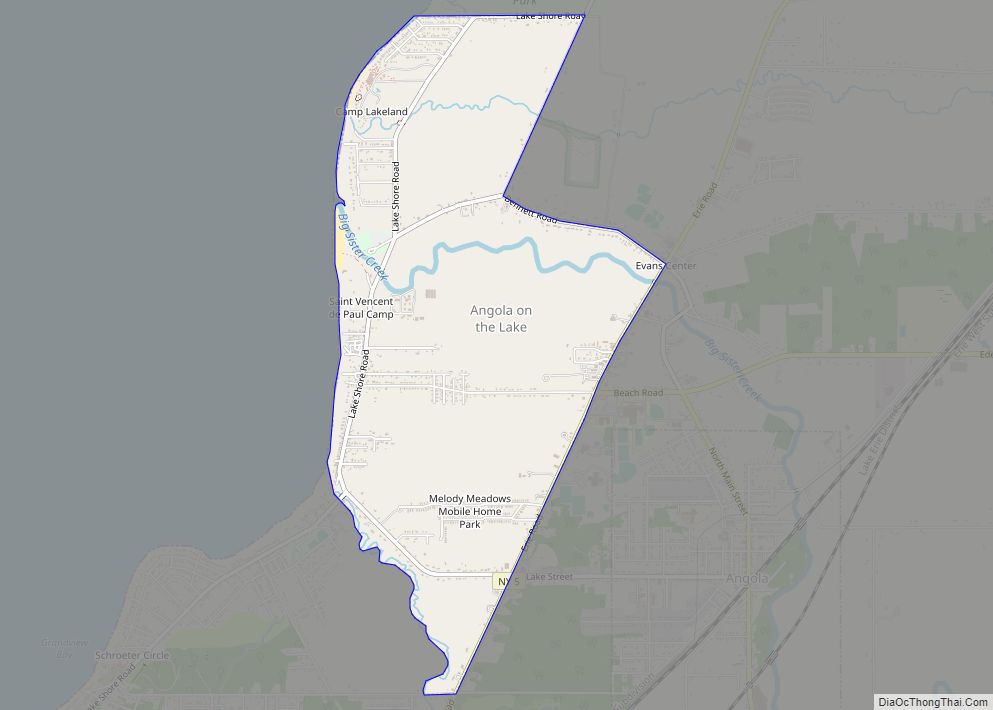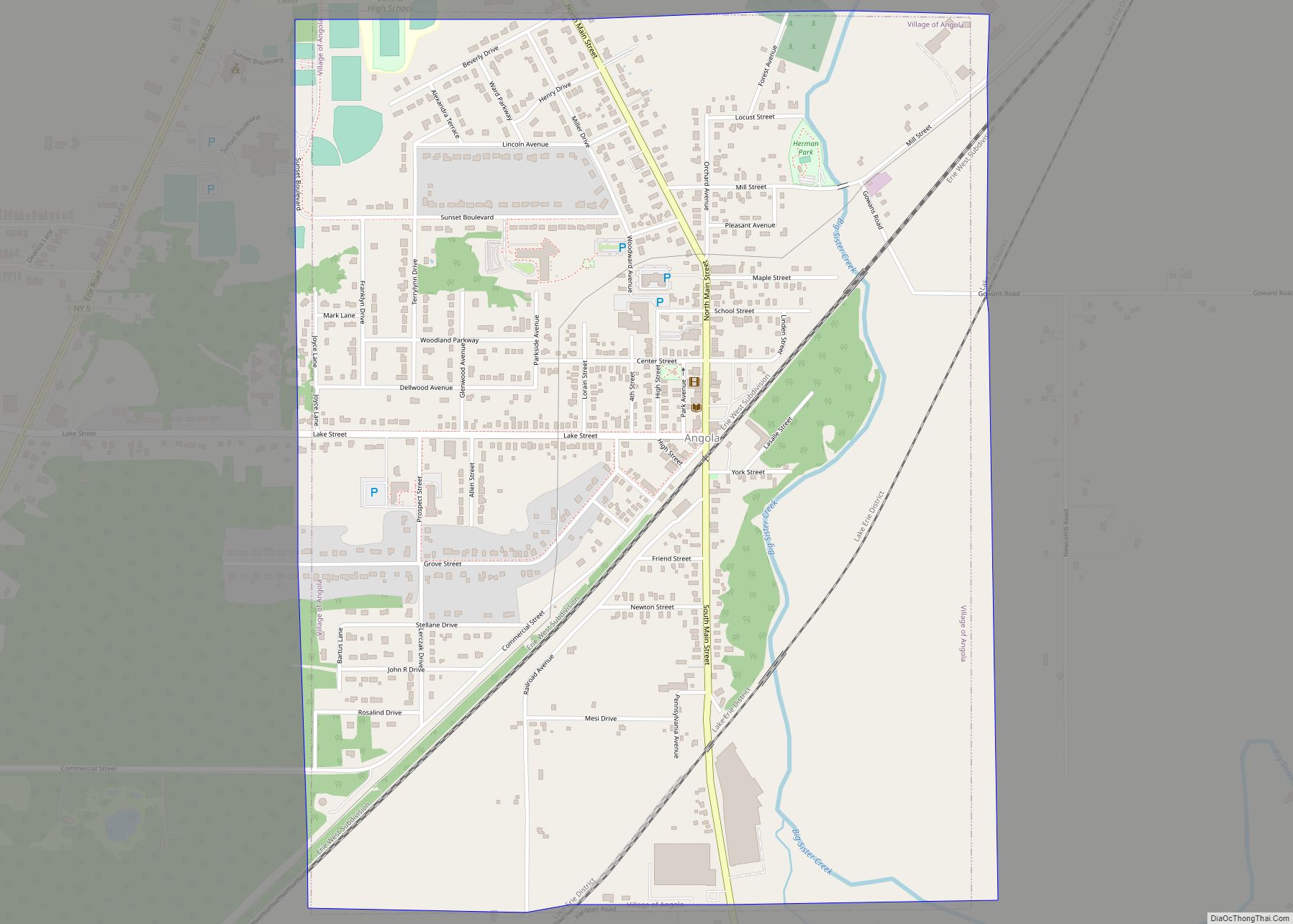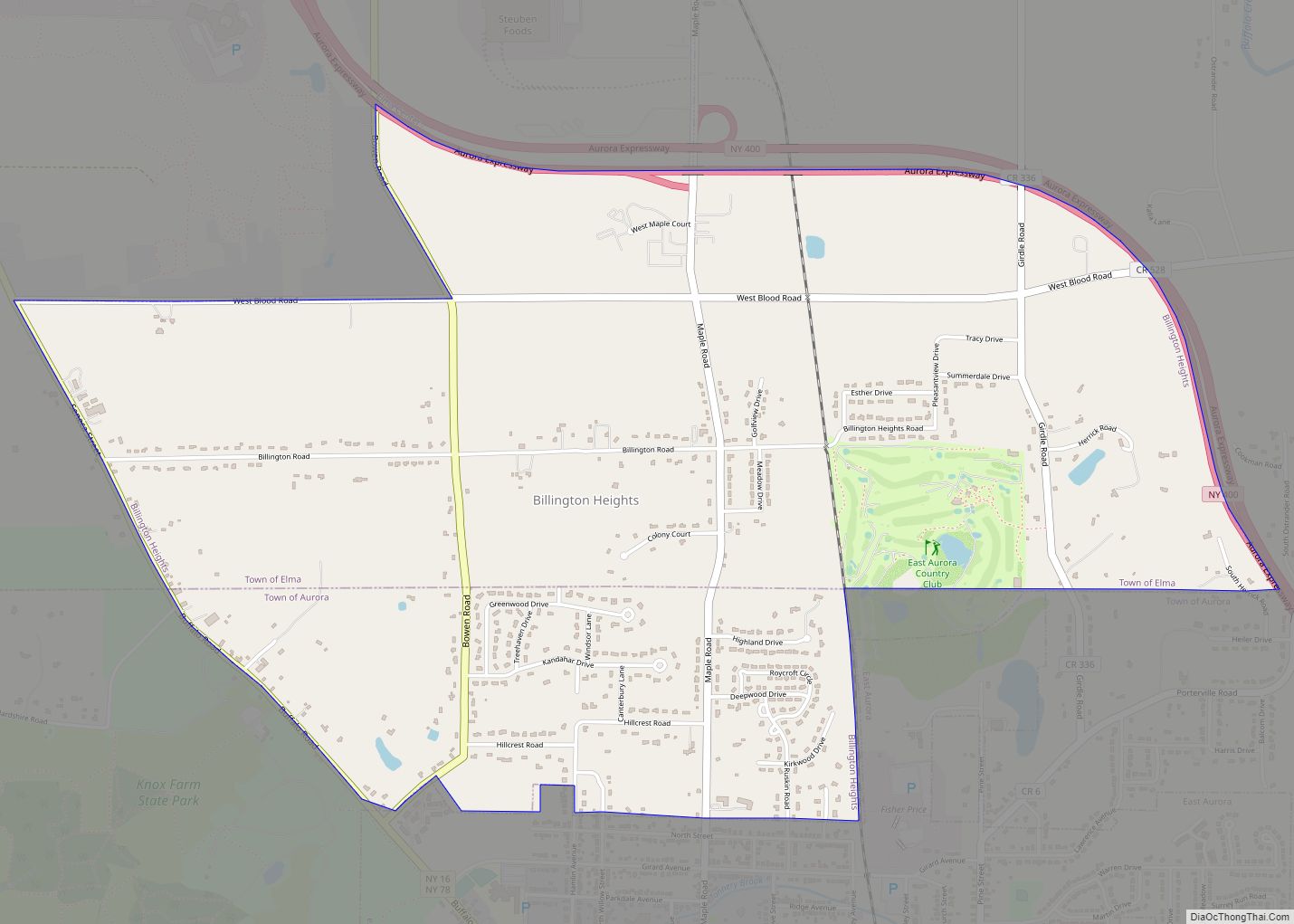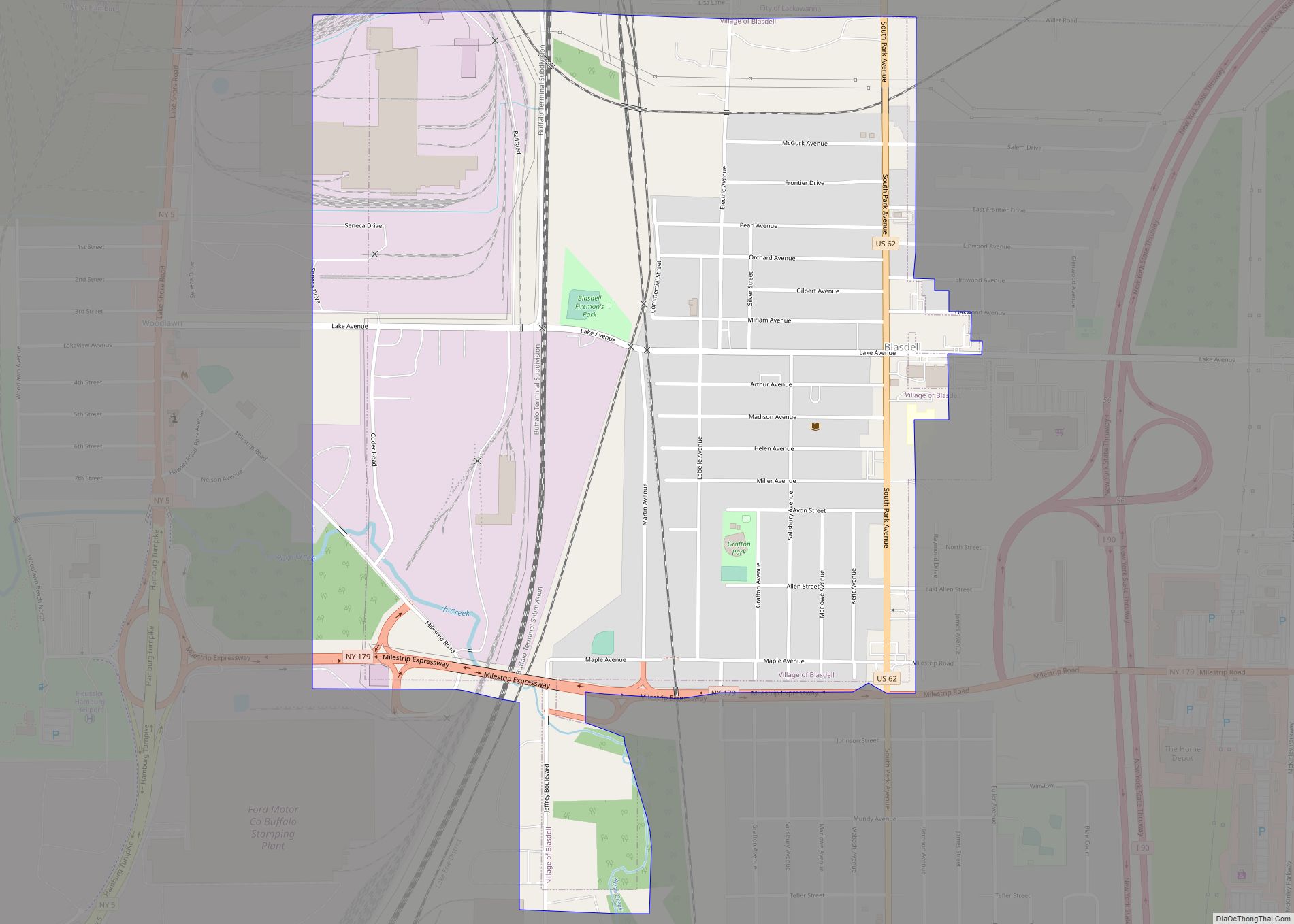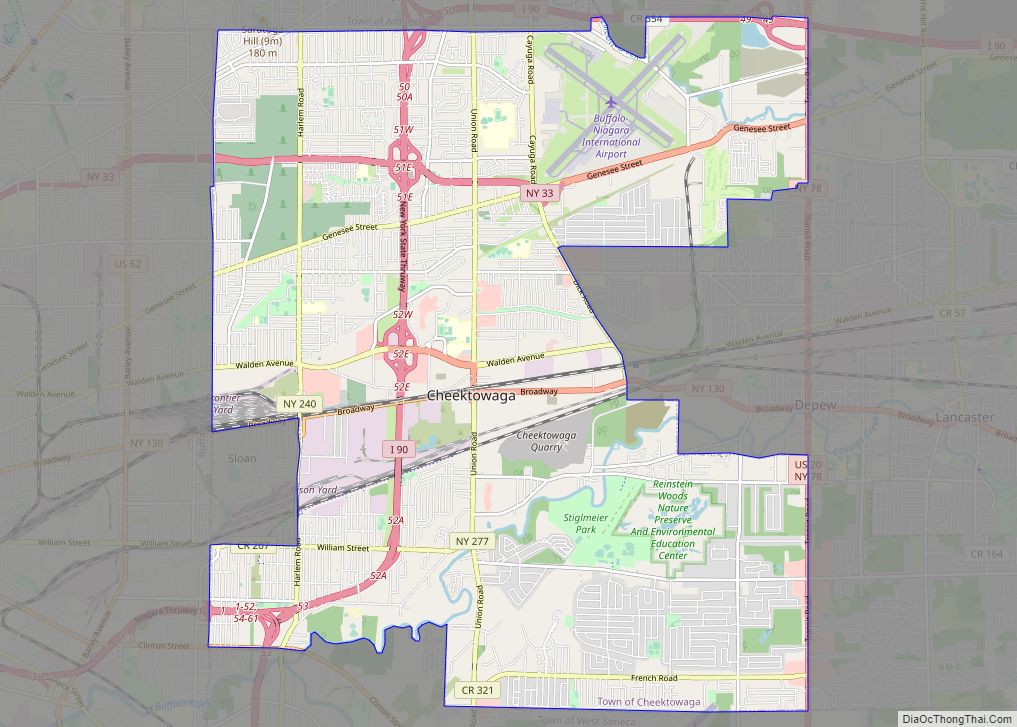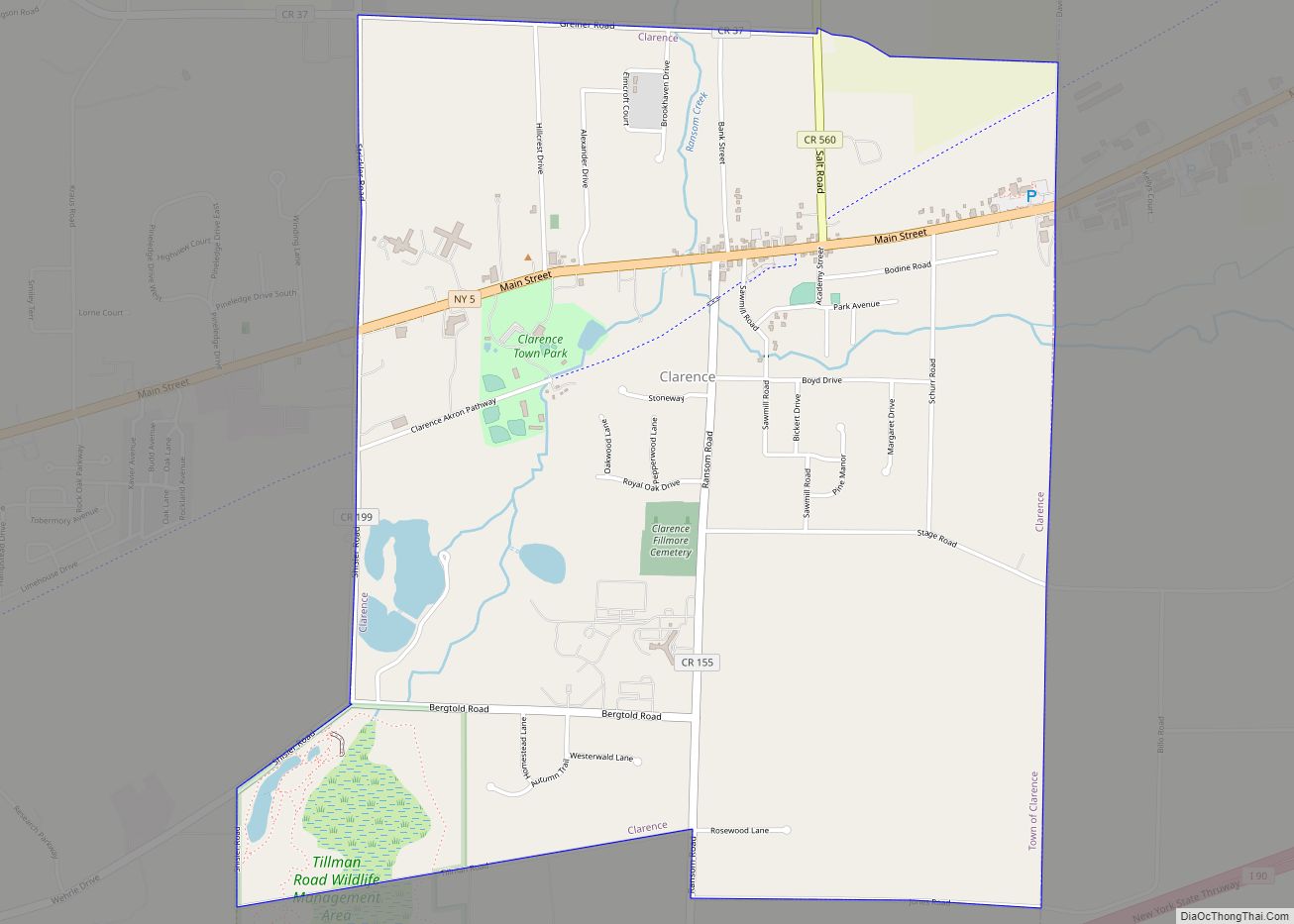The State University of New York at Buffalo, commonly called the University at Buffalo (UB) and sometimes called SUNY Buffalo, is a public research university with campuses in Buffalo and Amherst, New York, United States. The university was founded in 1846 as a private medical college and merged with the State University of New York system in 1962. It is one of the two flagship institutions of the SUNY system. As of fall 2020, the university enrolled 32,347 students in 13 schools and colleges, making it the largest and most comprehensive public university in the state of New York.
Since its founding by a group which included future United States President Millard Fillmore, the university has evolved from a small medical school to a large research university. Today, in addition to the College of Arts and Sciences, the university houses the largest state-operated medical school, dental school, education school, business school, engineering school, and pharmacy school, and is also home to SUNY’s only law school. UB has the largest enrollment, largest endowment, and most research funding among the universities in the SUNY system. The university offers bachelor’s degrees in over 140 areas of study, as well as over 220 master’s programs and over 95 doctoral programs, and 55 combined degree programs. The University at Buffalo and the University of Virginia are the only colleges founded by people who became United States Presidents.
The University at Buffalo is classified among “R1: Doctoral Universities – Very high research activity”. In 1989, UB was elected to the Association of American Universities, a selective group of major research universities in North America. UB’s alumni and faculty have included five Nobel laureates, five Pulitzer Prize winners, one head of government, two astronauts, three billionaires, one Academy Award winner, and one Emmy Award winner.
The University at Buffalo intercollegiate athletic teams are the Bulls. They compete in Division I of the NCAA and are members of the Mid-American Conference.
| Name: | University at Buffalo CDP |
|---|---|
| LSAD Code: | 57 |
| LSAD Description: | CDP (suffix) |
| State: | New York |
| County: | Erie County |
| FIPS code: | 3676280 |
| Website: | www.buffalo.edu |
Online Interactive Map
Click on ![]() to view map in "full screen" mode.
to view map in "full screen" mode.
University at Buffalo location map. Where is University at Buffalo CDP?
History
City leaders of Buffalo sought to establish a university in the city from the earliest days of Buffalo. A “University of Western New-York” was begun at Buffalo under the auspices of the Presbyterian Church and property was purchased at North Street and College, (the site of the later YMCA), on the north side of the Allentown district. “University of Western New-York” was chartered by the state on April 8, 1836. Following the charter, private funding was secured for the “Western University,” which would endow six or seven professorships at $5,000 each; an addition $12,000 or $15,000 was also collected for a general fund, and a building lot was donated by Judge Ebenezer Walden, one of the wealthiest men in the city. However, the project collapsed and no classes were ever offered, and only the layout of the College Street campus remains.
Founding
The University of Buffalo (as it was originally named) was founded on May 11, 1846, as a private medical school to train the doctors for the communities of Buffalo, Niagara Falls, and surrounding villages. Future U.S. President Millard Fillmore, then a lawyer who had recently served in the United States House of Representatives, was one of the principal founders. James Platt White was instrumental in obtaining a charter for the university from the state legislature in 1846. He also taught the first class of 89 men in obstetrics. State Assemblyman Nathan K. Hall was also “particularly active in procuring the charter”. The doors first opened to students in 1847 and after associating with a hospital for teaching purposes, the first class of students graduated the medical school in July 1847. Fillmore served as the school’s first chancellor, a position he held until 1874, even as he served in other capacities during that time, including Comptroller of New York, U.S. Vice President, and eventually President.
Initially, the university did not have its own facilities, and early lectures were given at an old post office on Seneca and Washington streets in Buffalo. The first building specially built for the university was a stone structure at the corner of Main and Virginia streets, built in 1849–50, through donations, public subscription, and a state grant. There were continuous expansions to the college medical programs, including a separate pharmacy division, which is now The School of Pharmacy and Pharmaceutical Sciences. In 1887, a law school was organized in Buffalo, which quickly became associated with Niagara University just to the north of Buffalo. After four years, in 1891, the law school was acquired by the University of Buffalo as the University of Buffalo Law School, which had a downtown Buffalo facility. In the first few years of the 20th century, the university began planning for a comprehensive undergraduate college to complete the basic structure of a university, and in 1909 the university acquired the Erie County Almshouse grounds from the county of Erie, which became the University of Buffalo’s initial campus. The establishment may have been influenced by the 1910 Flexner Report which criticized the preparation of the medical students at the university. With that additional space, in 1915, the then University of Buffalo formed the College of Arts and Sciences, creating an undergraduate division in addition to its prior educational work in the licensed professional fields. In 1916, Grace Millard Knox pledged $500,000 (equivalent to $12,451,000 in 2021) for the establishment of a “department of liberal arts and sciences in the University of Buffalo”, which was at the time still a private institution. The initial gift of $100,000 was for the purchase of what would become Townsend Hall and the remainder was to establish the university’s first endowment, in her husband’s name, to support the department.
In 1950, the Industrial Engineering department branched off from the Mechanical Engineering department. In 1956, a Civil Engineering Department was formed under Lehigh University graduate Robert L. Ketter, who went on to become Dean of the School of Engineering and Applied Sciences, and later President of the university. In 1959, WBFO was launched as an AM radio station by UB’s School of Engineering and Applied Sciences, and run by UB’s students. The station has since become the launching pad of two modern National Public Radio personalities: Terry Gross and Ira Flatow. In 1961, the Western New York nuclear research program was created at the university. This program installed a miniature, active nuclear fission reactor on the university’s South (Main Street) Campus. This program was not particularly active, nor could it compete with other government-run research labs, consequently, the programs performed in this facility were abandoned somewhat shortly after its inception. This reactor was decommissioned in 2005 with little fanfare due to material security concerns.
Acquisition by the SUNY system and second campus
The private University of Buffalo was purchased by and incorporated into the State University of New York (SUNY) system in 1962, and became known as the State University of New York at Buffalo, more commonly known as the University at Buffalo. This acquisition was championed by then-Governor of New York, Nelson Rockefeller. As a part of the agreement to merge the university into the SUNY system, the state began to build an extensive second campus for the university. In 1964, the state acquired several hundred acres in the town of Amherst on the northeast of Buffalo, for development as a comprehensive campus for most of the non-medical disciplines at the University at Buffalo. This is often called the North Campus; it is the center of most University at Buffalo activities. The North Campus project included several major buildings, dormitory complexes, a separate spur of the interstate highway, and a new lake. The undergraduate college, the law school, and graduate schools were all moved to the new campus. During the late 1960s, the College of Arts and Sciences was divided into three separate schools: arts and letters, natural sciences and mathematics, and social sciences. During the 1998–1999 academic year, the three schools were reunited to re-create the existing College of Arts and Sciences, when the faculties of Arts and Letters, Social Sciences, and Natural Sciences and Mathematics were combined, according to a memorandum issued by the State University of New York.
Since 1989, UB has been a member of the Association of American Universities (AAU), an organization of 65 leading research universities in the United States and Canada. UB president Satish K. Tripathi serves on the AAU board of directors.
“UB 2020” strategic plan
Started in 2004 under President John B. Simpson, UB 2020 was a strategic planning initiative to develop and implement a vision for the university over the subsequent 15 years. The centerpiece of UB 2020 was to add about 10,000 more students, 750 faculty members and 600 staff, increasing the size of the university by about 40 percent. UB 2020 also recognized the university’s contribution to the surrounding region. The most recent estimates of UB’s impact on the local and regional economies of Western New York report approximately $1.7 billion are brought into the local economy from the presence of UB. This figure is also expected to rise by 40 percent, corresponding with UB’s institutional growth.
One of the keys to helping UB achieve the goals of the UB 2020 plan, proponents said, was the passage of S2020 and A2020, known as the UB 2020 Flexibility and Economic Growth Act, by the New York State Legislature. On June 3, 2009, the State Senate passed S2020 and sent the bill to the Assembly for their consideration.
The current president, Satish K. Tripathi, continued his vocal support of UB 2020 and has been actively engaging in campus-wide discussion on the proposed tuition increases introduced by the bill.
In 2011, the School of Medicine and Biomedical Sciences received a donation of $40 million from an alumnus, George Melvin Ellis Jr., MD, who earned his medical degree from the university in 1945. The donation contributed to the $375 million project which has relocated the School of Medicine and Biomedical Sciences to UB’s downtown campus. The new school building was designed by HOK Architects. A subsequent donation of $30 million from Jeremy Jacobs and family was received in 2015 and the medical school was renamed the Jacobs School of Medicine and Biomedical Sciences.
From FY2011 to FY2012, UB spent over $300 million on the strategic plan to construct and open four new buildings, including Davis Hall, William R. Greiner Residence Hall, the Clinical and Translational Research Center and Kaleida Health medical research building, and Crossroads Culinary Center.
On August 22, 2013, President Barack Obama came to UB’s campus to give a speech about needed higher education reform in the country. President Obama highlighted UB’s accolades and specifically chose Buffalo for its excellence and commitment to the future, graduation rates and retention, and quality education at an affordable price.
As part of the UB 2020 initiative, “Heart of the Campus” projects were initiated in phases on each of UB’s three campuses. In Fall 2019, UB began construction of the One World Café, an “international eatery” located on North Campus, adjacent to Capen Hall, Norton Hall, and Founder’s Plaza.
Beginning in 2019, UB took steps to distance the institution from Millard Fillmore and ceased its co-sponsorship of his annual gravesite ceremony, due to his controversial policies regarding slavery in the United States. A year later, Fillmore’s name was removed from the Millard Fillmore Academic Center, and the names of UB’s fourth chancellor James O. Putnam and SUNY regent Peter Buell Porter were also removed from campus due to the former’s openly racist views and the latter’s ownership of slaves.
University at Buffalo Road Map
University at Buffalo city Satellite Map
See also
Map of New York State and its subdivision:- Albany
- Allegany
- Bronx
- Broome
- Cattaraugus
- Cayuga
- Chautauqua
- Chemung
- Chenango
- Clinton
- Columbia
- Cortland
- Delaware
- Dutchess
- Erie
- Essex
- Franklin
- Fulton
- Genesee
- Greene
- Hamilton
- Herkimer
- Jefferson
- Kings
- Lake Ontario
- Lewis
- Livingston
- Madison
- Monroe
- Montgomery
- Nassau
- New York
- Niagara
- Oneida
- Onondaga
- Ontario
- Orange
- Orleans
- Oswego
- Otsego
- Putnam
- Queens
- Rensselaer
- Richmond
- Rockland
- Saint Lawrence
- Saratoga
- Schenectady
- Schoharie
- Schuyler
- Seneca
- Steuben
- Suffolk
- Sullivan
- Tioga
- Tompkins
- Ulster
- Warren
- Washington
- Wayne
- Westchester
- Wyoming
- Yates
- Alabama
- Alaska
- Arizona
- Arkansas
- California
- Colorado
- Connecticut
- Delaware
- District of Columbia
- Florida
- Georgia
- Hawaii
- Idaho
- Illinois
- Indiana
- Iowa
- Kansas
- Kentucky
- Louisiana
- Maine
- Maryland
- Massachusetts
- Michigan
- Minnesota
- Mississippi
- Missouri
- Montana
- Nebraska
- Nevada
- New Hampshire
- New Jersey
- New Mexico
- New York
- North Carolina
- North Dakota
- Ohio
- Oklahoma
- Oregon
- Pennsylvania
- Rhode Island
- South Carolina
- South Dakota
- Tennessee
- Texas
- Utah
- Vermont
- Virginia
- Washington
- West Virginia
- Wisconsin
- Wyoming

